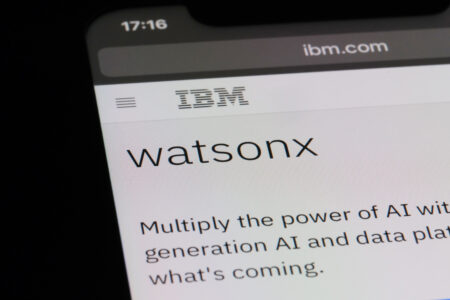
Apache Cassandra has emerged over the past 10 years as one of the world’s leading open source databases, used across industries for everything from IoT data management to personalization to e-commerce and other retail applications.
With its roots in work at Amazon, Facebook and Google, Cassandra is extremely capable of managing data at scale, but it is not known for ease-of-use. The NoSQL, wide-column database management system has traditionally required experienced administrators with the know-how and skills to configure and manage it.
But that is changing. Over the past year, DataStax has added new capabilities such as serverless; developer-friendly APIs; and message streaming to its Cassandra-based Astra DB cloud database. The new cloud-native features are transforming the popular database from an on-premises enterprise heavyweight to a modern, fully managed cloud service that can be used by businesses of all sizes and millions of developers.
“Cassandra has made a lot of things possible, but it hasn’t necessarily made them easy,” says Ed Anuff, Chief Product Officer with DataStax. “We’re automating the Cassandra experience, so you don’t need a whole set of experts to use it.”
Data privacy and governance
DataStax’s newest innovation in Astra DB, introduced this week, is multi-region replication, which makes it much easier for customers to store and process data in the geographic regions that align with their business requirements. Multi-region support enables users to:
- Designate the geographic region where data is processed and stored. This helps organizations comply with GDPR and other data sovereignty and privacy requirements, which differ country by country. It also makes it possible for businesses to expand globally with applications and services that support partners and customers with regional proximity.
- Build high performing applications with low latency. Cloud databases located within a region may be able to provide faster response times. This is particularly important for applications, such as transactions or real-time updates, that require response in milliseconds.
- Improve business continuity through high availability and disaster readiness. Astra DB replicates data across regions automatically, so customers are less susceptible to infrastructure outages and other potential disruptions.
Cassandra, and thus Astra DB, are well suited for multi-region deployment due to an active-active, or “active everywhere,” architecture comprised of independent, replicated nodes.
Craig Kitterman, VP Product Management with DataStax, says Astra DB’s multi-region capability can be configured in a matter of minutes, making it more feasible for organizations that may not have the in-house expertise to configure multi-region databases on their own. “We’re removing all of the complexity,” says Kitterman.
Avoiding lock-in
Astra DB is available on each of three of the leading public clouds: AWS, Google Cloud, and Microsoft Azure. That means Astra DB is now both multi-region and multi-cloud, giving organizations even greater flexibility in data distribution and management.
In addition to the advantages outlined above, benefits include ease and speed of deployment and the ability to use Astra DB within a preferred cloud environment. For example, IT teams that may already be using Google Cloud’s BigQuery for data warehousing may want to use Astra to build new applications in Google Cloud because it is a standard within their cloud architecture. Likewise with organizations that lean in the direction of AWS or Microsoft Azure.
There’s another factor in the decision about cloud providers — customers don’t want to be locked into a particular cloud environment. Astra DB’s multi-cloud, multi-region options help alleviate that all-to-common scenario.
Range of deployment options
Astra DB is available as a fully managed cloud service, which means DataStax handles database administration and software updates. That removes the pressure of day-to-day systems management from the customer, so development teams can focus on application development and business support.
Here too, however, customers have a choice. For organizations that prefer to do hands-on management themselves, the DataStax database can be self-managed in the cloud. And for those who may want to use it on-premises as part of a hybrid cloud strategy, DataStax Enterprise is available for download.
Multi-region deployment is the latest in a series of new cloud capabilities that DataStax has delivered with Astra DB. The objective, according to Chief Product Officer Anuff, is to transform Cassandra into a cloud-native database environment that is much easier for developers to use and work with. “We’re progressing on all fronts,” says Anuff.
Turnkey cloud database
DataStax, as the company name implies, is developing a “stack” of data-management capabilities. Key capabilities introduced over the past 12 months include:
- Astra DB serverless, made possible by decoupling compute and storage, enables automatic scaling, both up and down, to accommodate changes in database workloads. In addition to providing resource elasticity, serverless database as a service can lower costs because customers only pay for the server capacity used.
- Astra Streaming is a messaging and event-streaming capability, available in beta, that is built on the Apache Pulsar messaging and streaming platform. Astra Streaming supports “data in motion” and applications that require real-time message streaming, such as payment processing.
- Stargate, an open API framework, lets full-stack developers use their preferred APIs, such as JSON, GraphQL, and REST. In this way, they can work with different data types and data stores for application development.
- K8ssandra, DataStax’s open distribution of Cassandra on Kubernetes, works across major cloud platforms through integration with Amazon Elastic Kubernetes Service, Google Kubernetes Engine, and Azure Kubernetes Service. This facilitates Astra database management as part of a container-orchestration approach.
What does all of this add up to? Anuff describes the expanding AstraDB cloud stack as an open, connected data platform that brings together all of the infrastructure necessary to manage data across an enterprise and, now, around the world. Or more simply, he calls it a “turnkey” cloud data environment.
The serverless capability and other ease-of-use features have also made Astra DB — and, by extension, Cassandra — accessible to more businesses. In the past, Cassandra excelled at scale, but “it didn’t run small,” says Anuff.
Now, Astra DB serverless can run small when the workload is light, yet scale up to a million operations per second or more when needed. That’s what happens when an enterprise database is being transformed through cloud services, scale, and delivery options.
This article is brought to you by DataStax.






